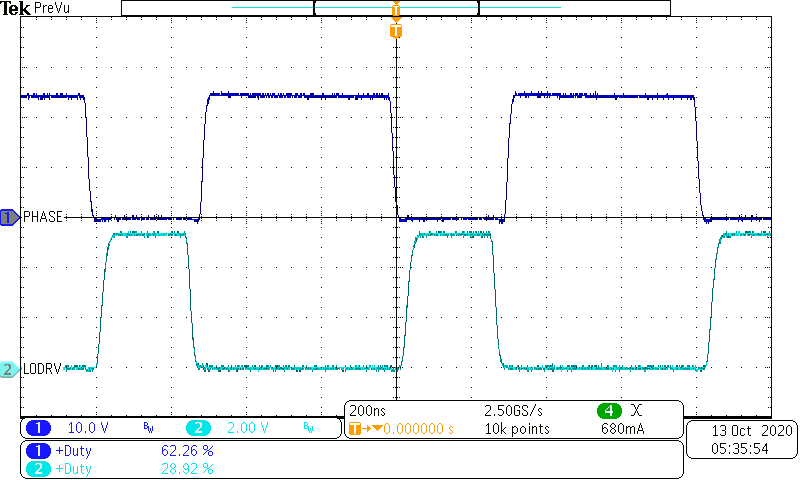Hi. We are using BQ24770 as shown in PDF datasheet, figure 21 (EVM module). CELL is pulled up. Programmed charge current is 3A, voltage limit is 15V. Supply voltage is 24V. When load (battery) is attached at output, we observe Q5 warming up significantly (hot). We measured HIDRV and LODRV using oscilloscope. We see rectangular waveform on HIDRV (we expected this), but LODRV is permanently low. That makes Q5 ordinal diode with ~0.7V voltage drop, and we observe ~2W power loss here. But in case of open circuit (no load at output), oscilloscope shows occasional pulses on both HIDRV and LODRV.
What can be reason of permanently low LODRV during battery charge? According to PDF datasheet, low side MOSFET should also be driven to reduce power dissipation (increase efficiency).
-
Ask a related question
What is a related question?A related question is a question created from another question. When the related question is created, it will be automatically linked to the original question.



